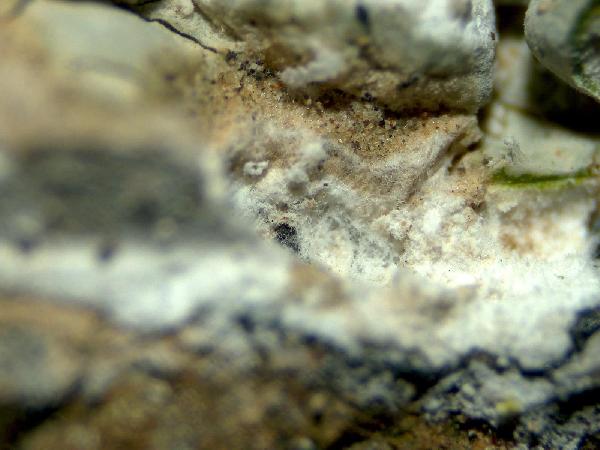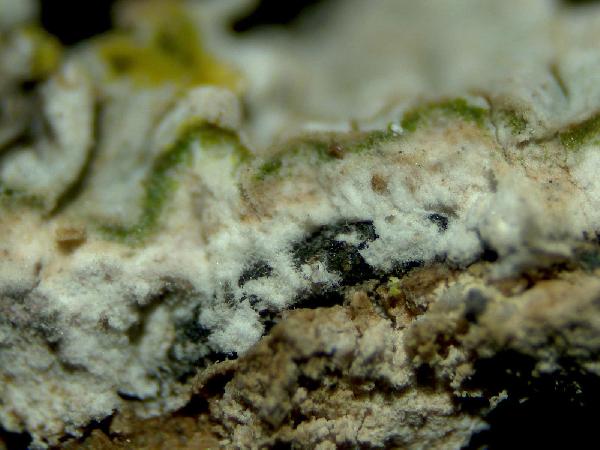Dirina fallax De Not.
Giorn. Bot. Ital., 2, 1: 189, 1846.
Synonyms: Dirina repanda f. isidiosa Werner; Dirina repanda f. lecideina H. Olivier; Dirina repanda f. sorediata Werner; Dirina repanda var. crassa Maheu & A. Gillet; Dirina repanda var. schistosa Bagl.; Dirina repanda var. stipitata Nyl.; Dirina schistosa (Bagl.) Nyl.; Lecidea praerimata Nyl.
Distribution: N - Lig. C - Tosc, Sar (Tehler & al. 2013). S - Si (Tehler & al. 2013)
Description: Thallus crustose, episubstratic, smooth to slightly rugose-verruculose, epruinose, grey-brown to cream-coloured, 0.1-1.5 mm thick, sometimes sorediate. Cortex 30-60 µm thick, of anticlinally arranged, colourless hyphae immersed in a pale yellow-brown gelatinous matrix; medulla chalky white, with loose hyphae near the substratum. Soralia present in sterile specimens, punctiform to maculiform, whitish to grey, the soredia 30–40 µm in diam. Apothecia lecanorine, sessile, constricted at base, round to angular in outline, up to 2 mm across, with a dark-grey to grey-black, but usually densely white-pruinose disc, and a thick, often wavy proper margin. Proper exciple inconspicuous; epithecium brownish, with crystals visible under polarized light; hymenium colourless; paraphysoids unbranched or sparsely branched, 1-2 µm thick, the apical cells 2-3 µm wide; hypothecium thick, black. Asci 8-spored, clavate, bitunicate, the apex thickened with a small internal K/I+ blue ring. Ascospores 3-septate, hyaline, fusiform, straight or slightly curved, 18–24 x 5-6 µm. Pycnidia black, immersed or slightly projecting. Conidia thread-like, sickle-shaped. Photobiont trentepohlioid. Spot tests: thallus K-, C+ faintly red, KC+ red, P-; medulla and soralia C-; apothecial disc C+ red. Chemistry: erythrin, lecanoric acid, plus unidentified substances.
Note: a mainly western, Mediterranean-Atlantic species of siliceous rocks which occurs also in Central Europe, along the Atlantic coast and in the British Isles, with both fertile or pycnidiate and sorediate specimens. The latter are very difficult to distinguish, both morphologically and chemically, from those of Ingaderia vandenboomii, the two species often occurring together in Atlantic Europe.
Growth form: Crustose
Substrata: rocks
Photobiont: Trentepohlia
Reproductive strategy: mainly sexual
In underhangs rarely wetted by rain
Taxon bound to maritime-coastal situations
Commonnes-rarity: (info)
Alpine belt: absent
Subalpine belt: absent
Oromediterranean belt: absent
Montane belt: absent
Submediterranean belt: absent
Padanian area: absent
Humid submediterranean belt: absent
Humid mediterranean belt: rare
Dry mediterranean belt: rare
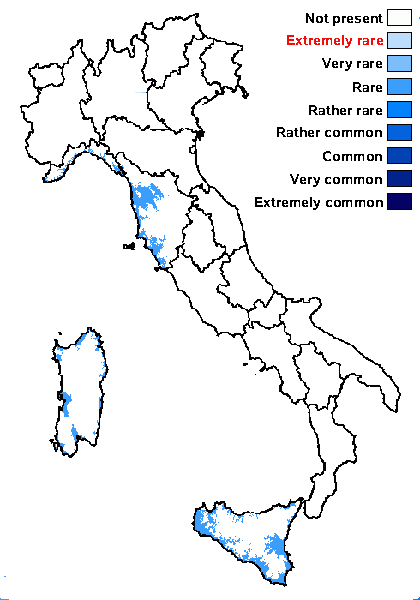
Predictive model
Herbarium samples
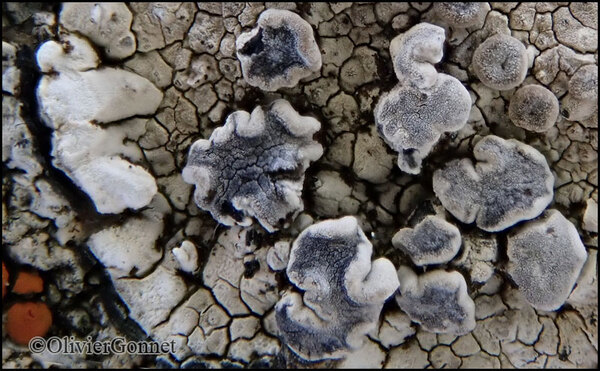
Courtesy Danièle et Olivier Gonnet - Source: https://www.afl-lichenologie.fr/Photos_AFL/Photos_AFL_D/Textes_D1/Dirina_fallax.htm
France, Ajaccio, Pointe de la Parata, alt.5 m - Corse
10/10/2018
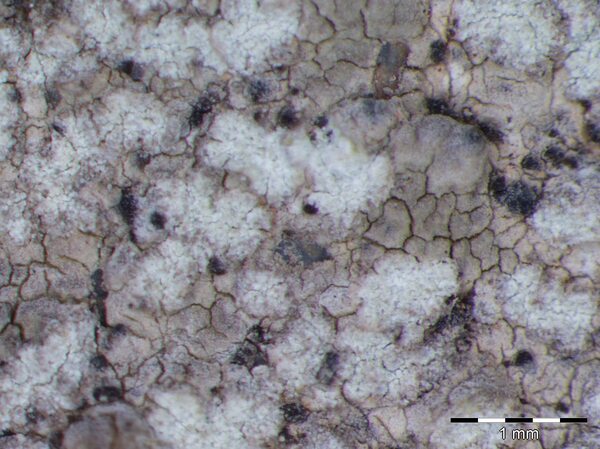
Harrie Sipman – Source http://www.bgbm.fu-berlin.de/sipman/Zschackia/AegeanLichens/CaloplacaAC.htm - As Caloplaca oasis

Courtesy Danièle et Olivier Gonnet - Source: https://www.afl-lichenologie.fr/Photos_AFL/Photos_AFL_D/Textes_D1/Dirina_fallax.htm
France, Ajaccio, Pointe de la Parata, alt.5 m - Corse
10/10/2018
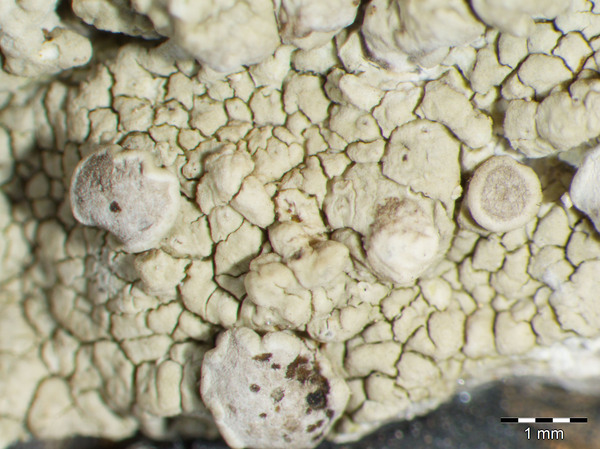
Harrie Sipman – Source http://www.bgbm.fu-berlin.de/sipman/Zschackia/AegeanLichens/CaloplacaAC.htm - As Caloplaca oasis
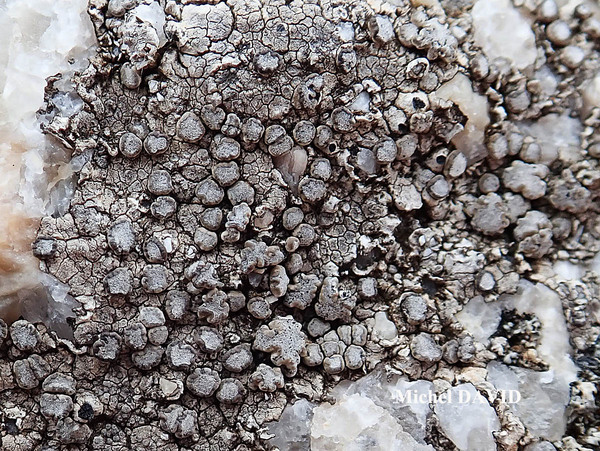
Michel David - Source: http://www.lichensmaritimes.org/index.php?task=fiche&lichen=1288&lang=en
France, Corse, Ile de Lavezzo
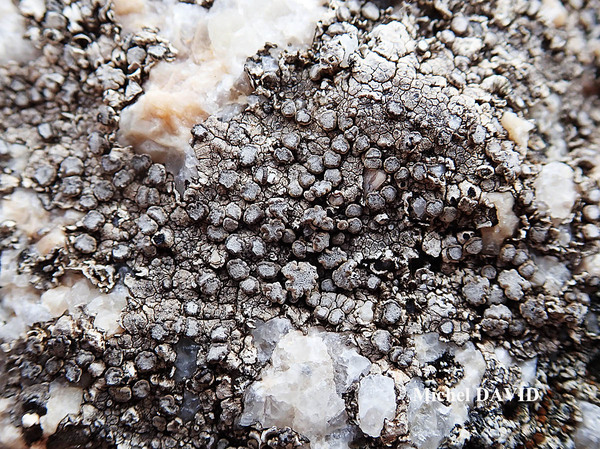
Michel David - Source: http://www.lichensmaritimes.org/index.php?task=fiche&lichen=1288&lang=en
France, Corse, Ile de Lavezzo

Michel David - Source: http://www.lichensmaritimes.org/index.php?task=fiche&lichen=1288&lang=en
France, Corse, Ile de Lavezzo
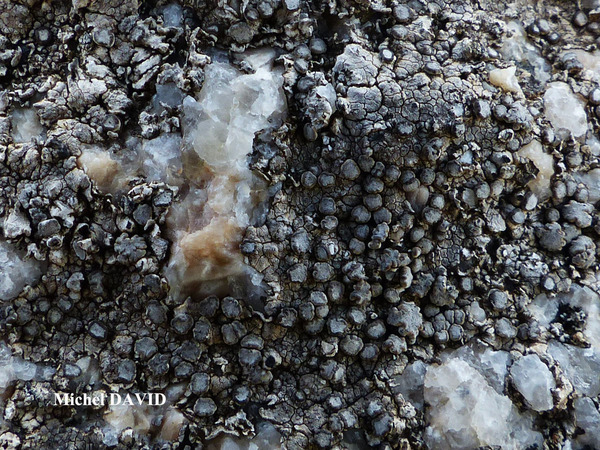
Michel David - Source: http://www.lichensmaritimes.org/index.php?task=fiche&lichen=1288&lang=en
France, Corse, Ile de Lavezzo
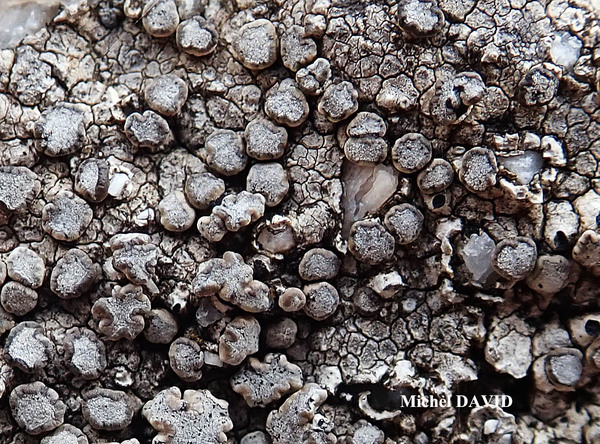
Michel David - Source: http://www.lichensmaritimes.org/index.php?task=fiche&lichen=1288&lang=en
France, Corse, Ile de Lavezzo
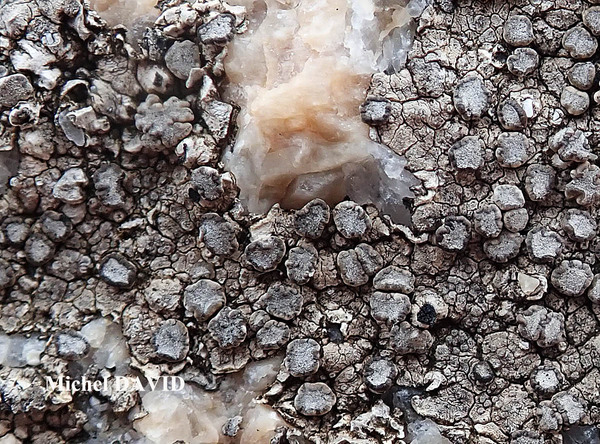
Michel David - Source: http://www.lichensmaritimes.org/index.php?task=fiche&lichen=1288&lang=en
France, Corse, Ile de Lavezzo
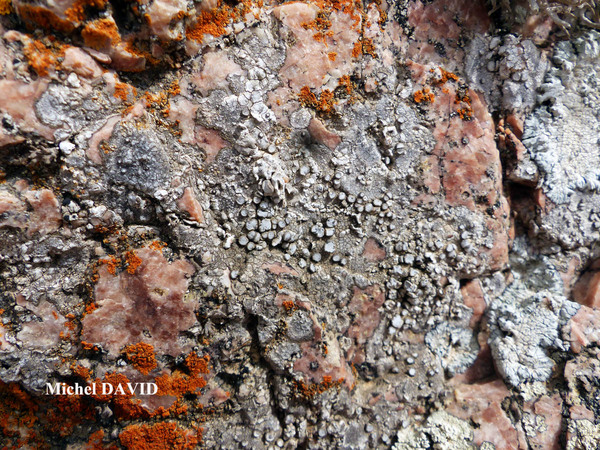
Michel David - Source: http://www.lichensmaritimes.org/index.php?task=fiche&lichen=1288&lang=en
France, Corse, Sur paroi verticale de granite, Bonifacio, La Tonnara
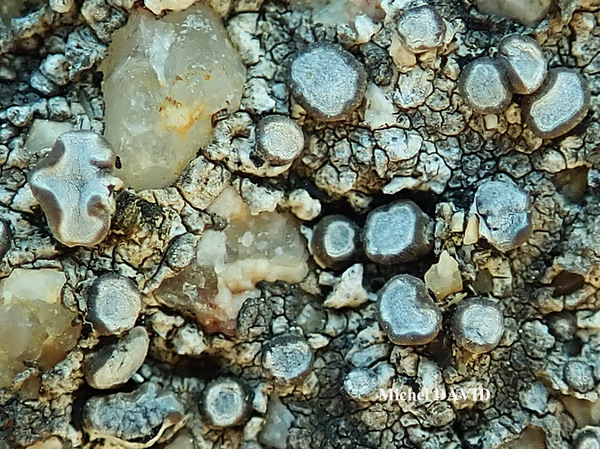
Michel David - Source: http://www.lichensmaritimes.org/index.php?task=fiche&lichen=1288&lang=en
France, Corse, Sur paroi verticale de granite, Bonifacio, La Tonnara
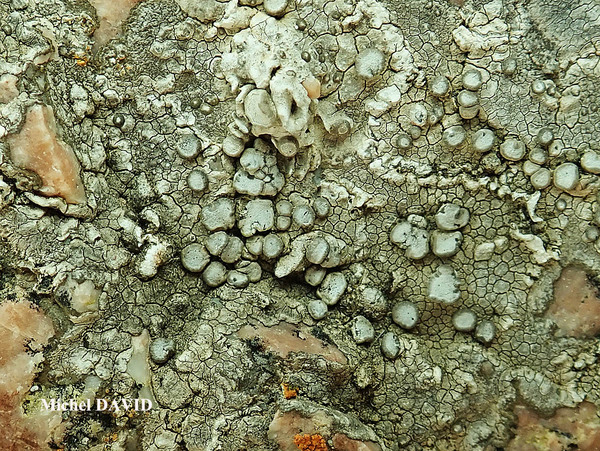
Michel David - Source: http://www.lichensmaritimes.org/index.php?task=fiche&lichen=1288&lang=en
France, Corse, Sur paroi verticale de granite, Bonifacio, La Tonnara
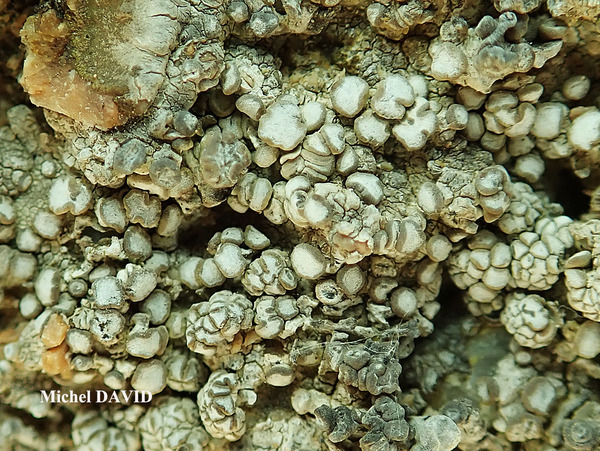
Michel David - Source: http://www.lichensmaritimes.org/index.php?task=fiche&lichen=1288&lang=en
France, Corse, Sur paroi verticale de granite, Bonifacio, La Tonnara
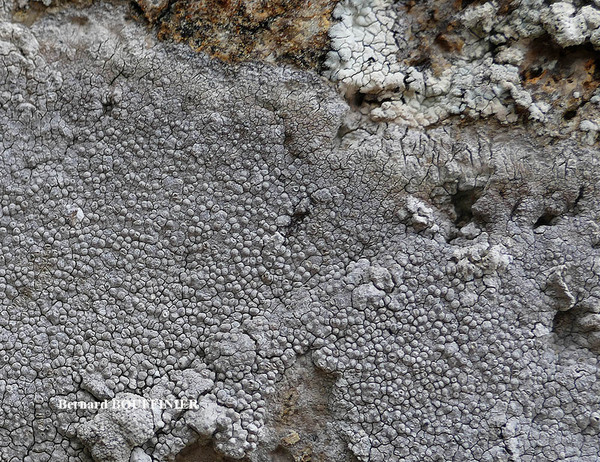
Bernard Bouffinier - Source: http://www.lichensmaritimes.org/index.php?task=fiche&lichen=880&lang=en
France, Pointe du Van
pycnidiate form
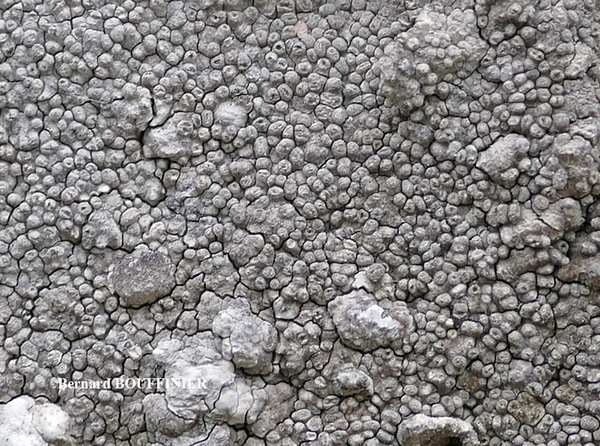
Bernard Bouffinier - Source: http://www.lichensmaritimes.org/index.php?task=fiche&lichen=880&lang=en
France, Pointe du Van
pycnidiate form
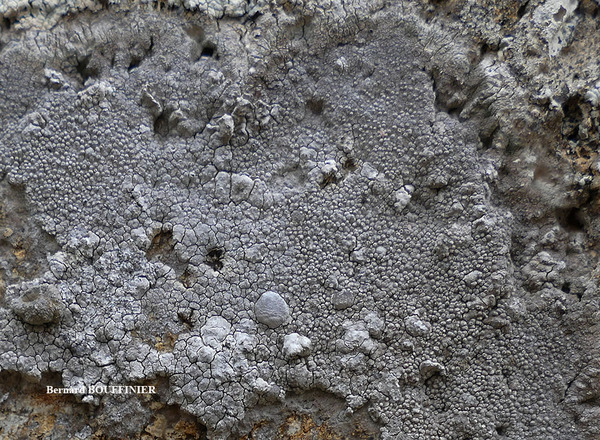
Bernard Bouffinier - Source: http://www.lichensmaritimes.org/index.php?task=fiche&lichen=880&lang=en
France, Pointe du Van
pycnidiate form
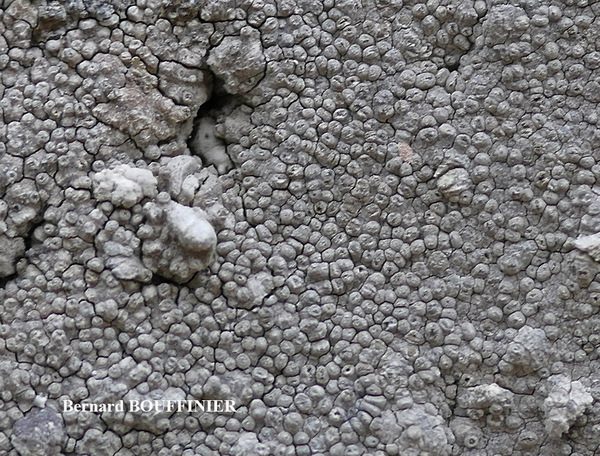
Bernard Bouffinier - Source: http://www.lichensmaritimes.org/index.php?task=fiche&lichen=880&lang=en
France, Pointe du Van
pycnidiate form
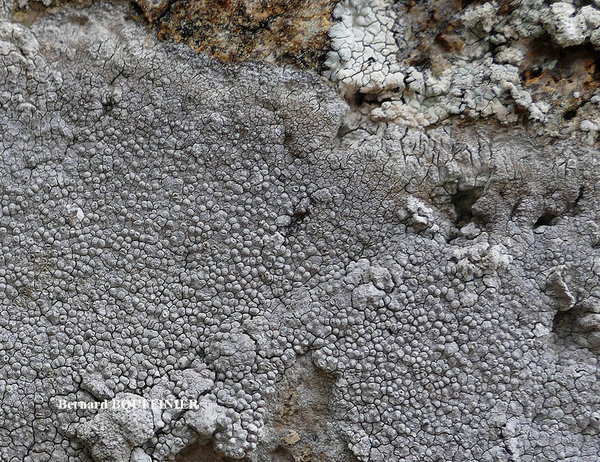
Bernard Bouffinier - Source: http://www.lichensmaritimes.org/index.php?task=fiche&lichen=880&lang=en
France, Pointe du Van
pycnidiate form
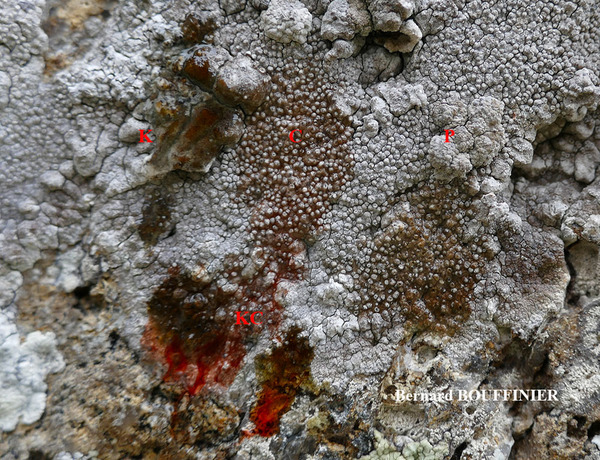
Bernard Bouffinier - Source: http://www.lichensmaritimes.org/index.php?task=fiche&lichen=880&lang=en
France, Pointe du Van
pycnidiate form

Alain Gerault - Source: http://www.lichensmaritimes.org/index.php?task=fiche&lichen=228&lang=en
France, Crozon
sorediate form
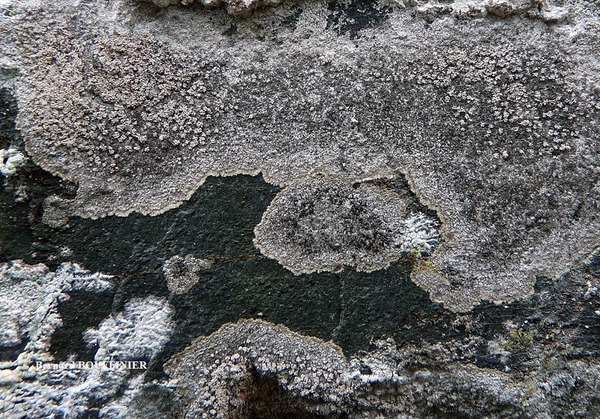
Bernard Bouffinier - Source: http://www.lichensmaritimes.org/index.php?task=fiche&lichen=228&lang=en
France, Camaret
sorediate form
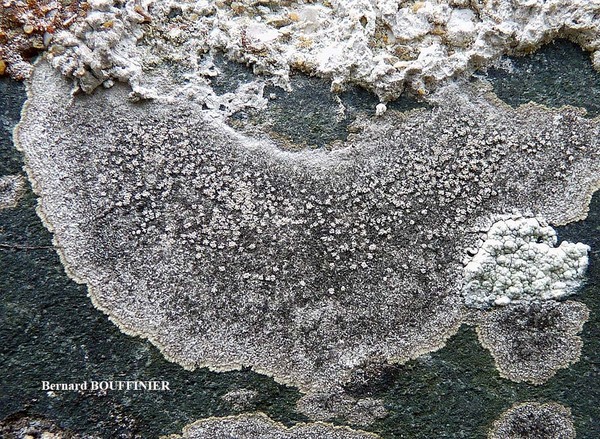
Bernard Bouffinier - Source: http://www.lichensmaritimes.org/index.php?task=fiche&lichen=228&lang=en
France, Chateaulin
sorediate form
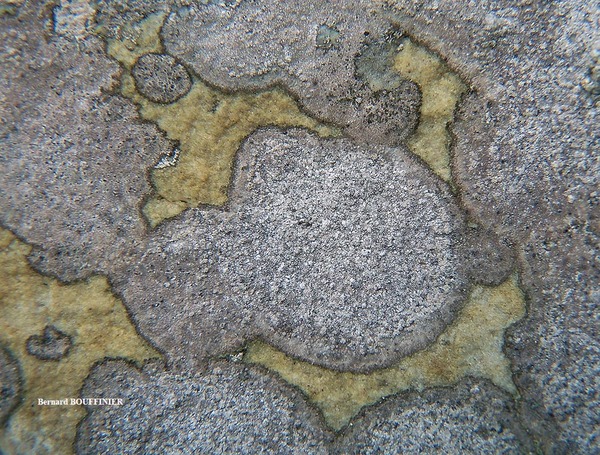
Bernard Bouffinier - Source: http://www.lichensmaritimes.org/index.php?task=fiche&lichen=228&lang=en
France, Crozon
sorediate form
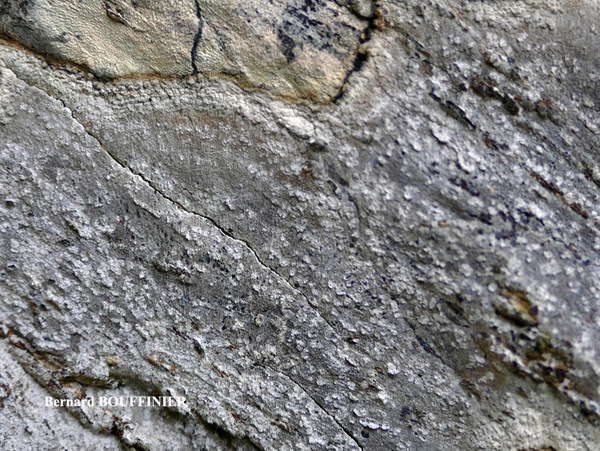
Bernard Bouffinier - Source: http://www.lichensmaritimes.org/index.php?task=fiche&lichen=228&lang=en
France, Plougastel-Daoulas
sorediate form
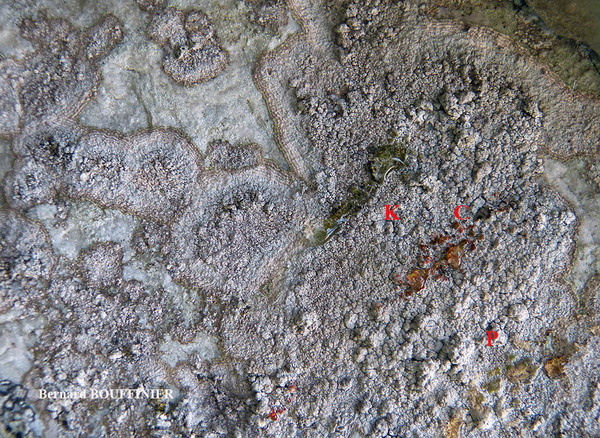
Bernard Bouffinier - Source: http://www.lichensmaritimes.org/index.php?task=fiche&lichen=228&lang=en
France, Pointe de Pen-Hir
sorediate form
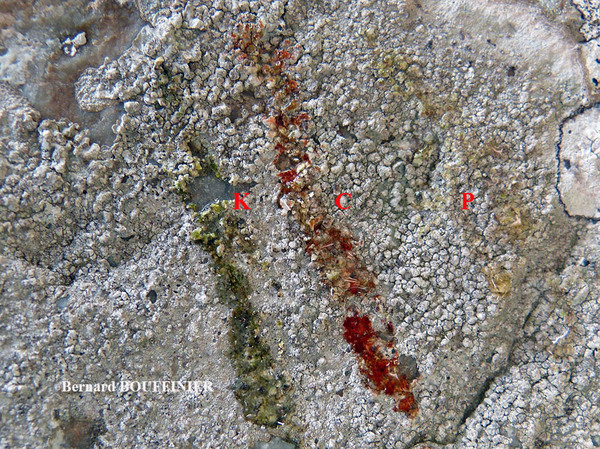
Bernard Bouffinier - Source: http://www.lichensmaritimes.org/index.php?task=fiche&lichen=228&lang=en
France, Pointe de Pen-Hir
sorediate form
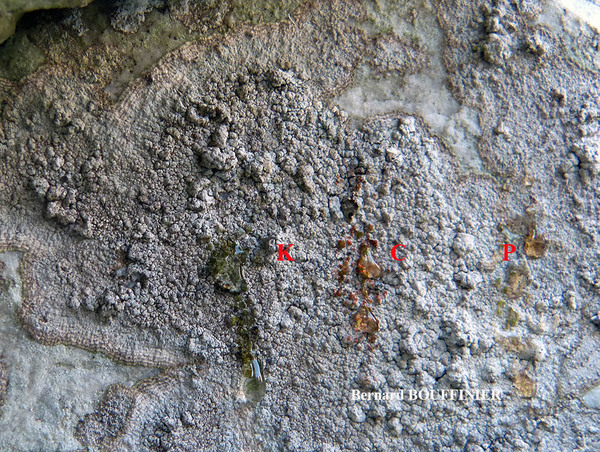
Bernard Bouffinier - Source: http://www.lichensmaritimes.org/index.php?task=fiche&lichen=228&lang=en
France, Pointe de Pen-Hir
sorediate form
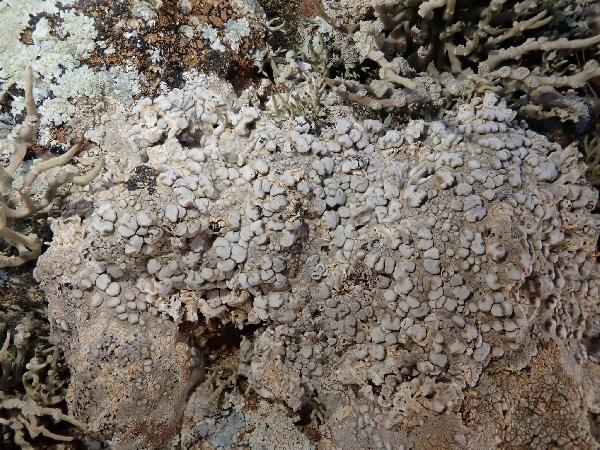
Manuel Gil
Spain, Canary Islands, Lanzarote
Saxícola, en roca volcánica.
Córtex C+ débilmente rojo. Médula C-. Disco de los apotecios C+ rojo. Pruina del disco rimosa
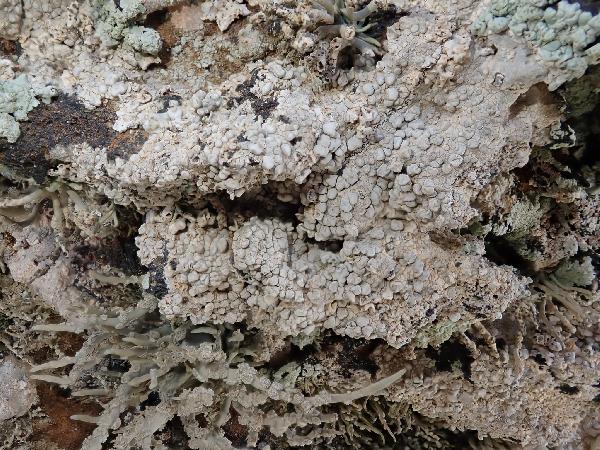
Manuel Gil
Spain, Canary Islands, Lanzarote
Saxícola, en roca volcánica.
Córtex C+ débilmente rojo. Médula C-. Disco de los apotecios C+ rojo. Pruina del disco rimosa
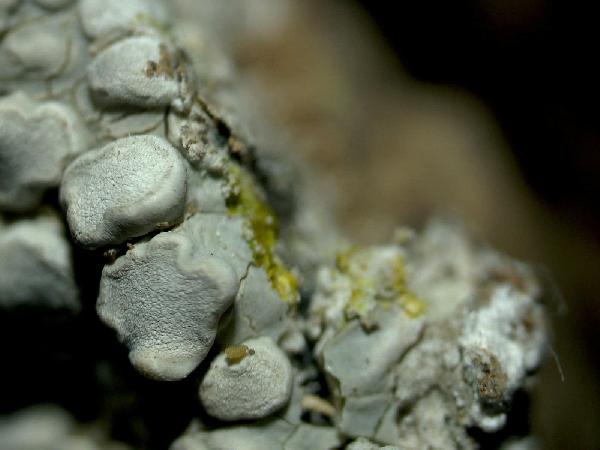
Manuel Gil
Spain, Canary Islands, Lanzarote
Saxícola, en roca volcánica.
Córtex C+ débilmente rojo. Médula C-. Disco de los apotecios C+ rojo. Pruina del disco rimosa
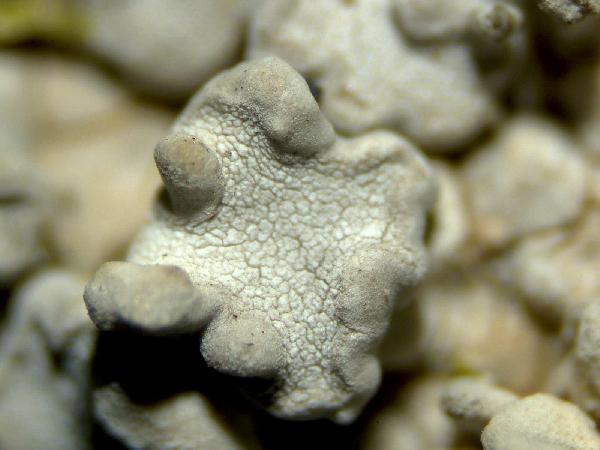
Manuel Gil
Spain, Canary Islands, Lanzarote
Saxícola, en roca volcánica.
Córtex C+ débilmente rojo. Médula C-. Disco de los apotecios C+ rojo. Pruina del disco rimosa
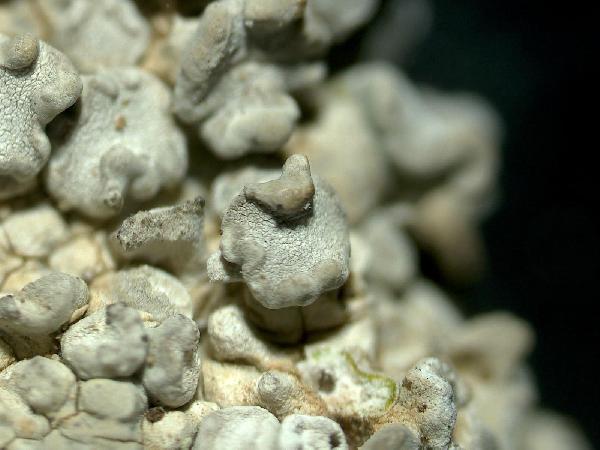
Manuel Gil
Spain, Canary Islands, Lanzarote
Saxícola, en roca volcánica.
Córtex C+ débilmente rojo. Médula C-. Disco de los apotecios C+ rojo. Pruina del disco rimosa
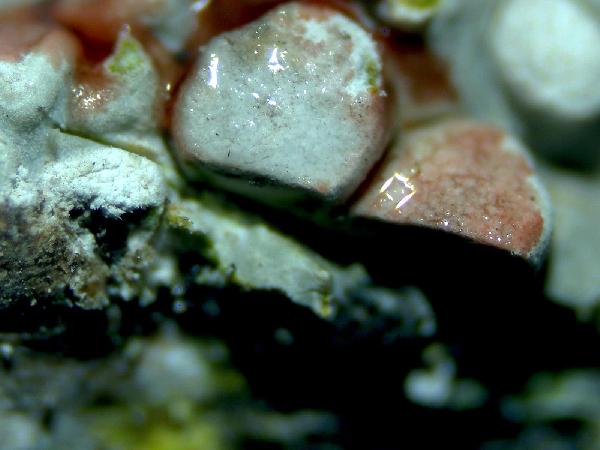
Manuel Gil
Spain, Canary Islands, Lanzarote
Saxícola, en roca volcánica.
Córtex C+ débilmente rojo. Médula C-. Disco de los apotecios C+ rojo. Pruina del disco rimosa
Growth form: Crustose
Substrata: rocks
Photobiont: Trentepohlia
Reproductive strategy: mainly sexual
In underhangs rarely wetted by rain
Taxon bound to maritime-coastal situations
Commonnes-rarity: (info)
Alpine belt: absent
Subalpine belt: absent
Oromediterranean belt: absent
Montane belt: absent
Submediterranean belt: absent
Padanian area: absent
Humid submediterranean belt: absent
Humid mediterranean belt: rare
Dry mediterranean belt: rare

Predictive model
| Herbarium samples |

Courtesy Danièle et Olivier Gonnet - Source: https://www.afl-lichenologie.fr/Photos_AFL/Photos_AFL_D/Textes_D1/Dirina_fallax.htm
France, Ajaccio, Pointe de la Parata, alt.5 m - Corse
10/10/2018

Harrie Sipman – Source http://www.bgbm.fu-berlin.de/sipman/Zschackia/AegeanLichens/CaloplacaAC.htm - As Caloplaca oasis

Courtesy Danièle et Olivier Gonnet - Source: https://www.afl-lichenologie.fr/Photos_AFL/Photos_AFL_D/Textes_D1/Dirina_fallax.htm
France, Ajaccio, Pointe de la Parata, alt.5 m - Corse
10/10/2018

Harrie Sipman – Source http://www.bgbm.fu-berlin.de/sipman/Zschackia/AegeanLichens/CaloplacaAC.htm - As Caloplaca oasis

Michel David - Source: http://www.lichensmaritimes.org/index.php?task=fiche&lichen=1288&lang=en
France, Corse, Ile de Lavezzo

Michel David - Source: http://www.lichensmaritimes.org/index.php?task=fiche&lichen=1288&lang=en
France, Corse, Ile de Lavezzo

Michel David - Source: http://www.lichensmaritimes.org/index.php?task=fiche&lichen=1288&lang=en
France, Corse, Ile de Lavezzo

Michel David - Source: http://www.lichensmaritimes.org/index.php?task=fiche&lichen=1288&lang=en
France, Corse, Ile de Lavezzo

Michel David - Source: http://www.lichensmaritimes.org/index.php?task=fiche&lichen=1288&lang=en
France, Corse, Ile de Lavezzo

Michel David - Source: http://www.lichensmaritimes.org/index.php?task=fiche&lichen=1288&lang=en
France, Corse, Ile de Lavezzo

Michel David - Source: http://www.lichensmaritimes.org/index.php?task=fiche&lichen=1288&lang=en
France, Corse, Sur paroi verticale de granite, Bonifacio, La Tonnara

Michel David - Source: http://www.lichensmaritimes.org/index.php?task=fiche&lichen=1288&lang=en
France, Corse, Sur paroi verticale de granite, Bonifacio, La Tonnara

Michel David - Source: http://www.lichensmaritimes.org/index.php?task=fiche&lichen=1288&lang=en
France, Corse, Sur paroi verticale de granite, Bonifacio, La Tonnara

Michel David - Source: http://www.lichensmaritimes.org/index.php?task=fiche&lichen=1288&lang=en
France, Corse, Sur paroi verticale de granite, Bonifacio, La Tonnara

Bernard Bouffinier - Source: http://www.lichensmaritimes.org/index.php?task=fiche&lichen=880&lang=en
France, Pointe du Van
pycnidiate form

Bernard Bouffinier - Source: http://www.lichensmaritimes.org/index.php?task=fiche&lichen=880&lang=en
France, Pointe du Van
pycnidiate form

Bernard Bouffinier - Source: http://www.lichensmaritimes.org/index.php?task=fiche&lichen=880&lang=en
France, Pointe du Van
pycnidiate form

Bernard Bouffinier - Source: http://www.lichensmaritimes.org/index.php?task=fiche&lichen=880&lang=en
France, Pointe du Van
pycnidiate form

Bernard Bouffinier - Source: http://www.lichensmaritimes.org/index.php?task=fiche&lichen=880&lang=en
France, Pointe du Van
pycnidiate form

Bernard Bouffinier - Source: http://www.lichensmaritimes.org/index.php?task=fiche&lichen=880&lang=en
France, Pointe du Van
pycnidiate form

Alain Gerault - Source: http://www.lichensmaritimes.org/index.php?task=fiche&lichen=228&lang=en
France, Crozon
sorediate form

Bernard Bouffinier - Source: http://www.lichensmaritimes.org/index.php?task=fiche&lichen=228&lang=en
France, Camaret
sorediate form

Bernard Bouffinier - Source: http://www.lichensmaritimes.org/index.php?task=fiche&lichen=228&lang=en
France, Chateaulin
sorediate form

Bernard Bouffinier - Source: http://www.lichensmaritimes.org/index.php?task=fiche&lichen=228&lang=en
France, Crozon
sorediate form

Bernard Bouffinier - Source: http://www.lichensmaritimes.org/index.php?task=fiche&lichen=228&lang=en
France, Plougastel-Daoulas
sorediate form

Bernard Bouffinier - Source: http://www.lichensmaritimes.org/index.php?task=fiche&lichen=228&lang=en
France, Pointe de Pen-Hir
sorediate form

Bernard Bouffinier - Source: http://www.lichensmaritimes.org/index.php?task=fiche&lichen=228&lang=en
France, Pointe de Pen-Hir
sorediate form

Bernard Bouffinier - Source: http://www.lichensmaritimes.org/index.php?task=fiche&lichen=228&lang=en
France, Pointe de Pen-Hir
sorediate form

Manuel Gil
Spain, Canary Islands, Lanzarote
Saxícola, en roca volcánica.
Córtex C+ débilmente rojo. Médula C-. Disco de los apotecios C+ rojo. Pruina del disco rimosa

Manuel Gil
Spain, Canary Islands, Lanzarote
Saxícola, en roca volcánica.
Córtex C+ débilmente rojo. Médula C-. Disco de los apotecios C+ rojo. Pruina del disco rimosa

Manuel Gil
Spain, Canary Islands, Lanzarote
Saxícola, en roca volcánica.
Córtex C+ débilmente rojo. Médula C-. Disco de los apotecios C+ rojo. Pruina del disco rimosa

Manuel Gil
Spain, Canary Islands, Lanzarote
Saxícola, en roca volcánica.
Córtex C+ débilmente rojo. Médula C-. Disco de los apotecios C+ rojo. Pruina del disco rimosa

Manuel Gil
Spain, Canary Islands, Lanzarote
Saxícola, en roca volcánica.
Córtex C+ débilmente rojo. Médula C-. Disco de los apotecios C+ rojo. Pruina del disco rimosa

 Index Fungorum
Index Fungorum
 GBIF
GBIF
